This isn’t the only place on the internet you can find the rules of chess, but it is by far the best. Why? We have a sense of humor, for starters. We also teach children chess as a profession. Ask any kid and they’ll tell you that learning is fun and exciting – if you really want to be good at teaching kids, you have to be good at making things fun and exciting. Plus there’s this: however old or young you are, if you’re just now coming to a website to learn how to play chess, most of our students can wipe the floor with you (or your hairpiece!) in a one on one battle. And that’s OK – don’t be discouraged by the prospect of being outsmarted by a six-year old. If they can do this, so can you!
The Board
Congratulations! You’re about to pass a big milestone in your life – a ‘checkerboard’ is about to become a ‘chess board’. Checkers is for babies to play before they’re ready to play chess.
A chess board has 64 squares, 32 black, and 32 white. We use a grid system for naming the squares, so we’re not standing around confused when someone says, ‘Move your pawn up.’ There’s 8 pawns and if we carried on that way, we would never get ourselves anywhere. Each column has a letter, and each row has a number. When we say a square’s name, we say the letter and then the number. When you’re sitting down in front of a chess board, always put the letters in front of you. Here’s a nice example for you:

If your board doesn’t have letters, don’t throw a temper tantrum and break it just yet. Strive to be an example of the benefits of civilization for others to follow. Find the corner with a white square and make sure it’s on your right-hand side.
Capturing
We’re moving on from checkers, right? Well, stopping thinking about ‘jumping’ pieces. In chess we ‘capture’. This means moving onto the square where your opponent’s piece is currently residing and taking it off the board. It’s like pushing someone off the chair they are sitting on. Some people say chess is a metaphor for life but in real life this would be very rude.
The Pawn
Imagine you’re sitting in your car in your garage (no big deal if you don’t have a garage, we’re using our imagination). Now imagine your gears are stuck and you can only go forward. Being able to reverse is useful, right? Well, pawns can’t do that. The good news is you have 8 of them.

Pawns are also slow, like humans in a swimming pool. They only move one square at a time. Also like a human in a swimming pool, they can ‘push off’ on their first move, and move two squares instead of one. Once they’re out in the open, though, it’s regular slow swimming from now on.
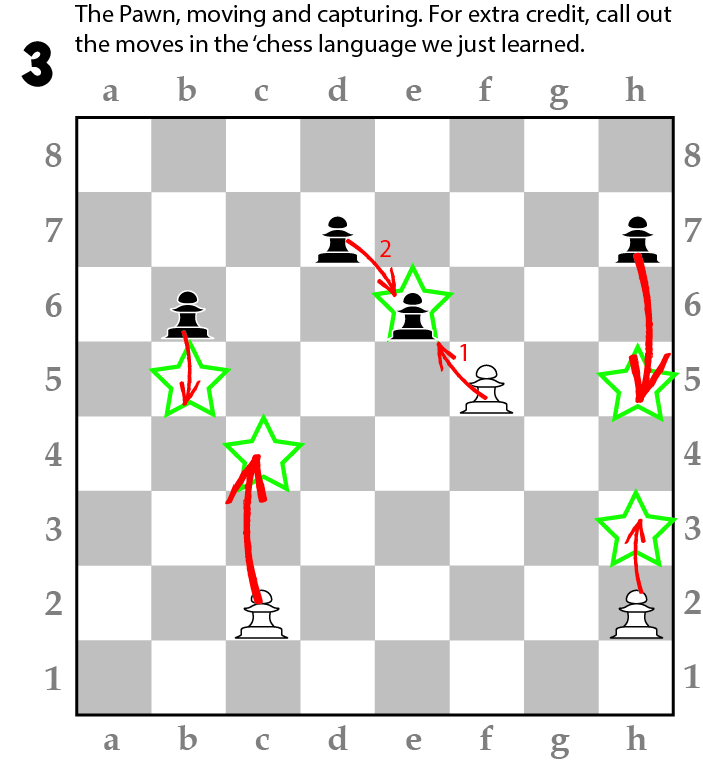
Hopefully you’re not too confused yet, because here’s some more brain-hurt – pawns capture differently than they move. Two pawns moving forward on the same column will eventually crash into each other, like two cars on the same one-lane street. As long as they’re in the same lane, they’re stuck. Pawns capture diagonally. Here’s another analogy for you. Imagine you have two friends (you have two friends, don’t you?) on either side of you, and all three of you are carrying 40 lb buckets of live octopus. You are walking forward on the same path. Walking towards you are three people, also carrying buckets of octopus. Your goal will be to pour the contents of your bucket on the other team before they pour it on you. Of the three people in front of you, who is going to get a slimy shower of marine life?

If you know anything about buckets, you know it’s really hard to pour a bucket straight in front of you without turning to the side. In our example, if you’re the pawn on d4, either the other team’s pawn on c5 or e5 is getting an unpleasant slimy surprise. Consequently, you’re going to need to keep an eye on those two pawns if you intend to keep your clothes clean.
Got it so far? Good. I know it’s weird to start with the most complicated piece. Trust me, it gets weirder, there is a rule called En Passant, but don’t get bogged down in that right now, I’m going to pop the link to it in the bottom of the article. There’s also a really neat trick pawns have called Promotion, where if they get all the way to the end of the chess board, they can transform into any piece you want (well, besides another pawn, of course, or the King). The rest of pieces won’t be as wordy, I promise. Want some pawn practice? Here’s a link to a different blog with a great pawn-only game called Pawntastic.
The King
The King moves one square at a time, and captures the same way he moves. How’s that for simple. The important thing to remember about the King is he is the most important piece – if he were to be captured, you would lose the game. Because we don’t want that to happen, he cannot move himself into danger (meaning on a square where he could be captured the following move). You wouldn’t just jump into the tiger pit at the zoo, would you? That isn’t just being smart, it’s a rule.
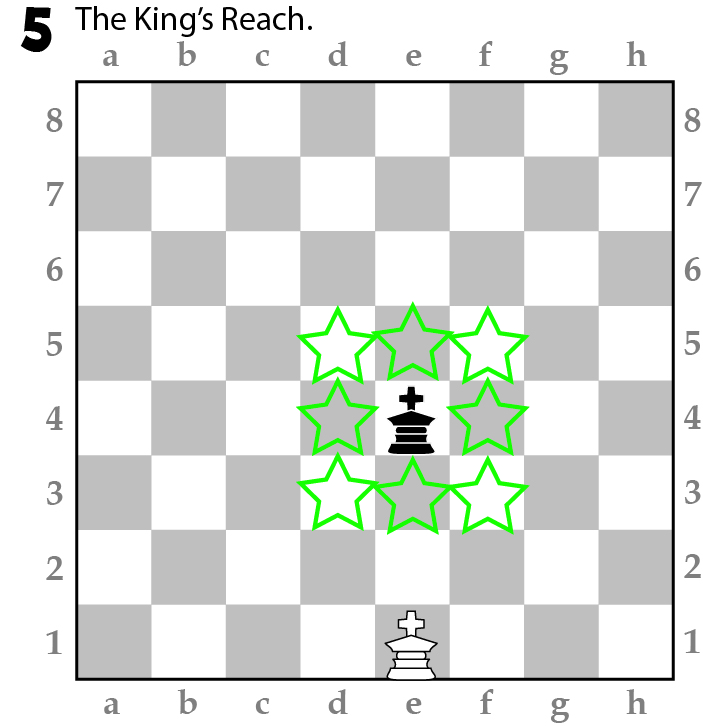
A consequence of this rule is you’ll never see two Kings in squares next to each other – one of them would have broken the rule and moved onto a square where the other King could capture it. Imagine the Kings are two people who aren’t getting along right now – it’s better to just avoid each other for a while than to get into an argument. Taking a look at how our students use their Kings is a useful way to tell if they’re telling the us truth when they say, “Wizard, I already know how to play chess!”
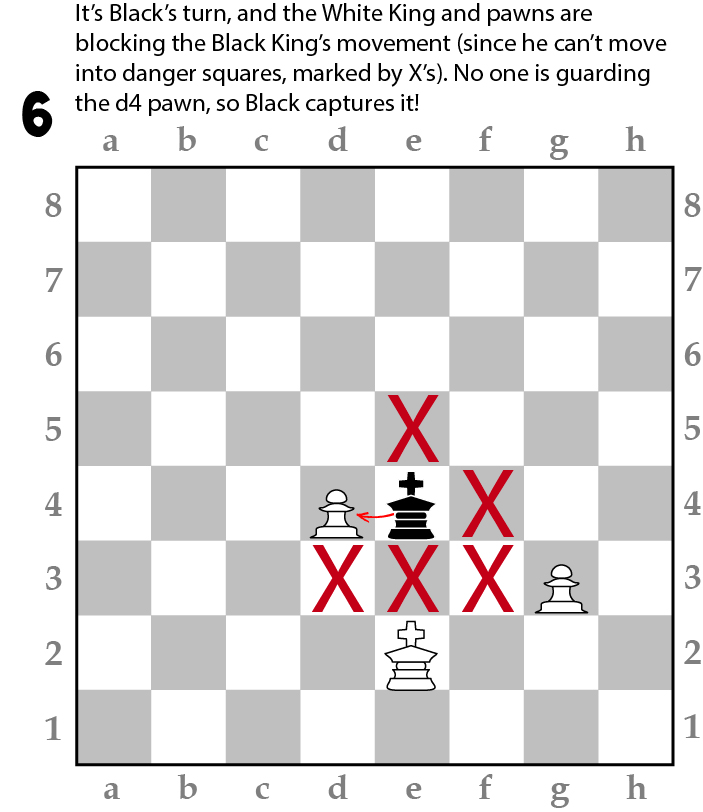

The Rook
Now it’s time for some super powers. The Rook can move up and down, left and right, until he runs into something. Imagine a big plus sign. He captures the same way he moves. Rooks can move to every square on the chess board within two moves, so they are very powerful pieces.
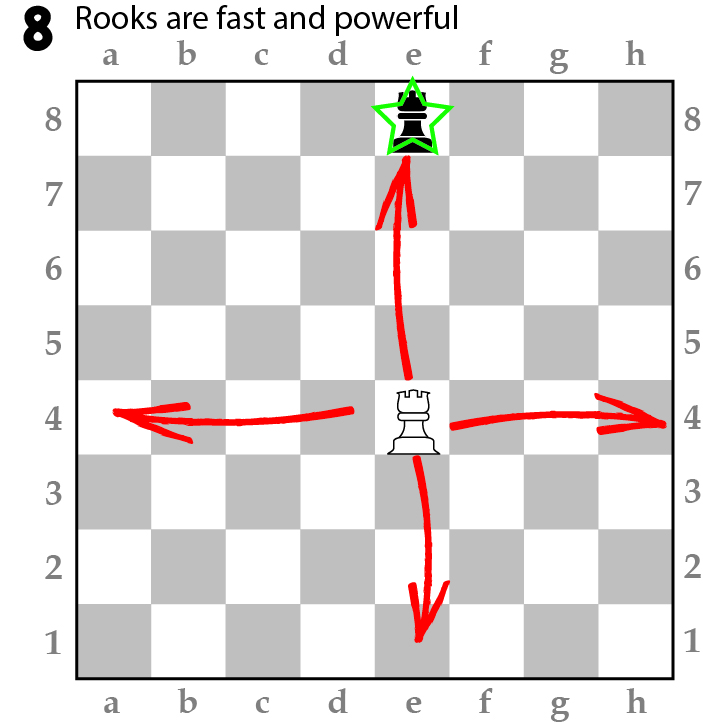
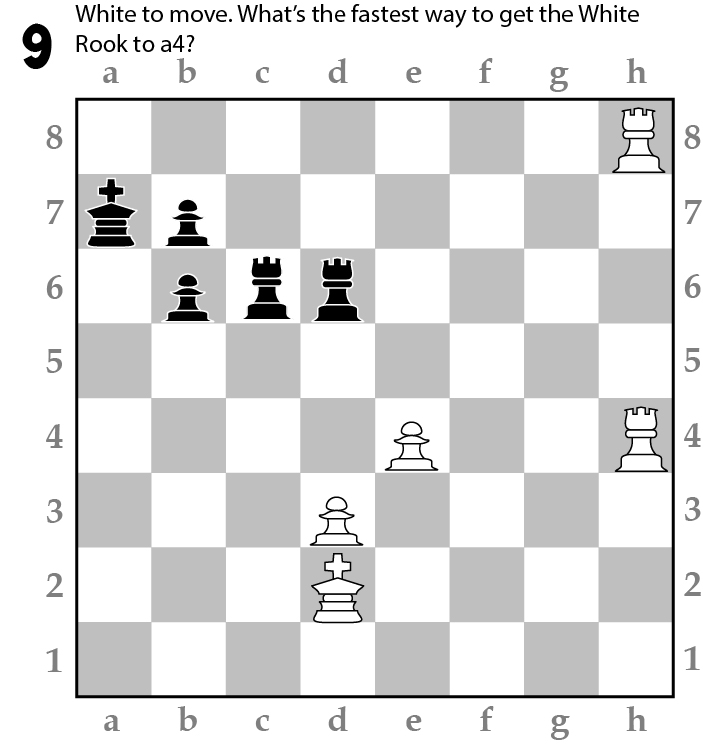
The Bishop
The Bishop moves diagonally across the board. Imagine a giant X emanating from a Bishop and you’ll get a feel for their full range. They capture the same way they move. Pretty impressive, but no one is perfect. Take a closer look at that imaginary X you’ve just drew (or just look at our board, below). You probably noticed that a Bishop starting on a white square wouldn’t be able to get to a black square. Ever. That’s a big problem if you only have one Bishop. The good news is you start the game with two. Try not to get them captured.
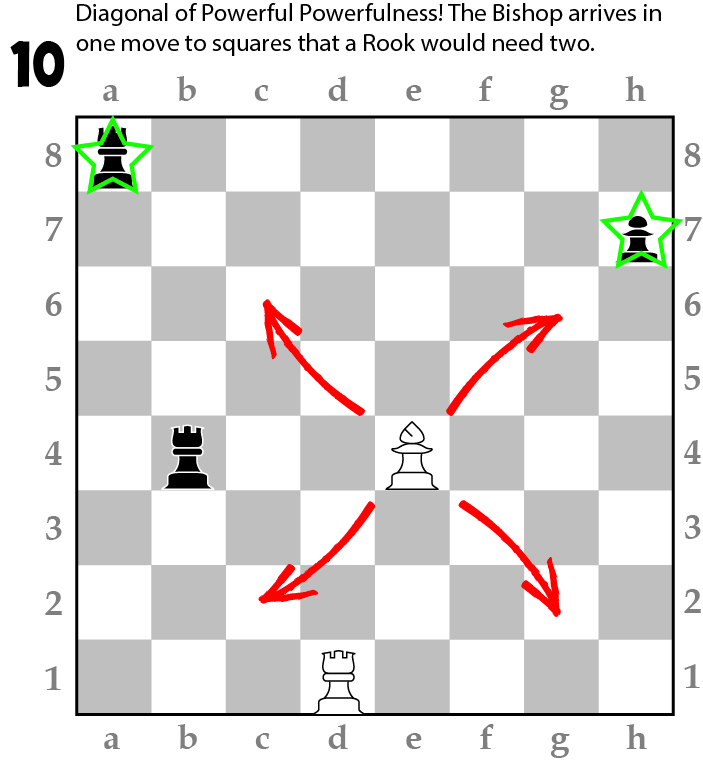
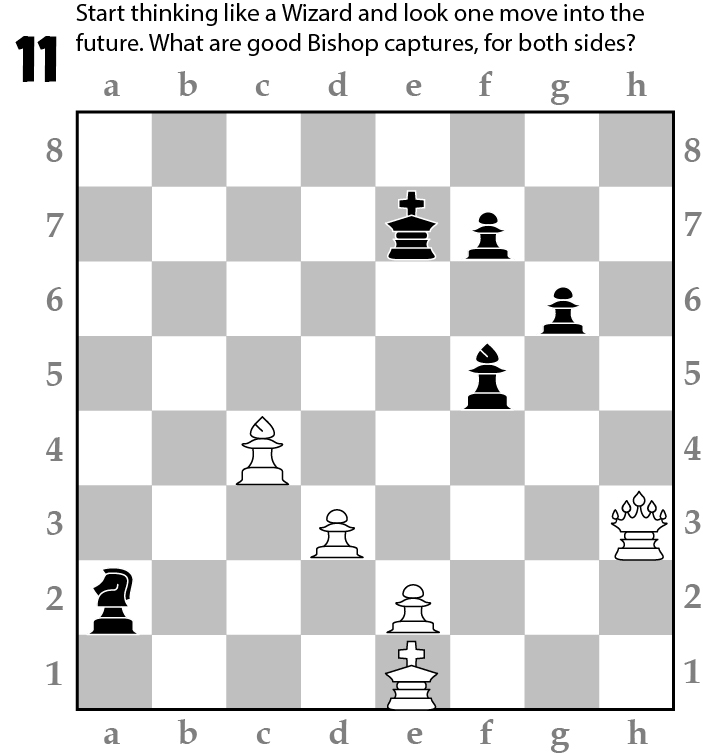
The Queen
This young lady (she’s approximately 500 years old) combines the movement of a Bishop and Rook into one piece. Just a minute ago I said that no one is perfect. Everyone has SOME weakness, right? For the Queen, I guess you could say that her weakness is there is only one of her. Or that she can’t jump over pieces. But otherwise, she’s kind of a big deal. She’s the strongest piece and you’ll want to be smart about how you utilize her superpowers. If your Queen gets captured while your opponent still has theirs, you’re going to have a very tough game.

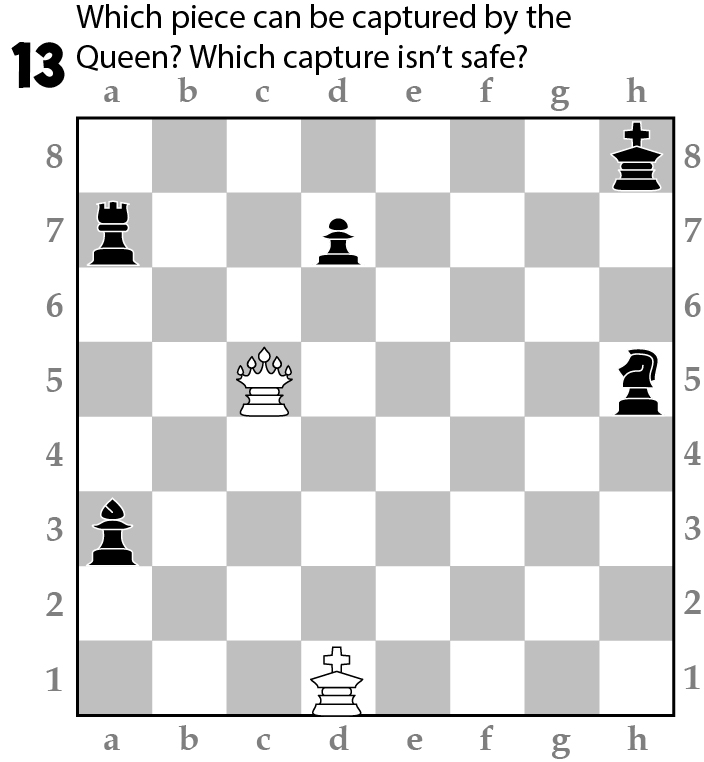
The Knight
Helicopters. Jedis. Grasshoppers, the Knight. What do these things have in common? They are unblockable. Put a wall in front of a Jedi, see what happens. Sure, they could walk around it, but that wouldn’t look as cool as jumping over it. So you make that wall a box with lasers and force fields guarding the top. The Knight moves 3 squares in an ‘L’ shape, and it jumps over other pieces. It captures where it lands, so don’t go thinking you can just take out 3 pieces every time you move it. Some kids try this all the time on new kids who don’t know the rules, so don’t let them get away with it!

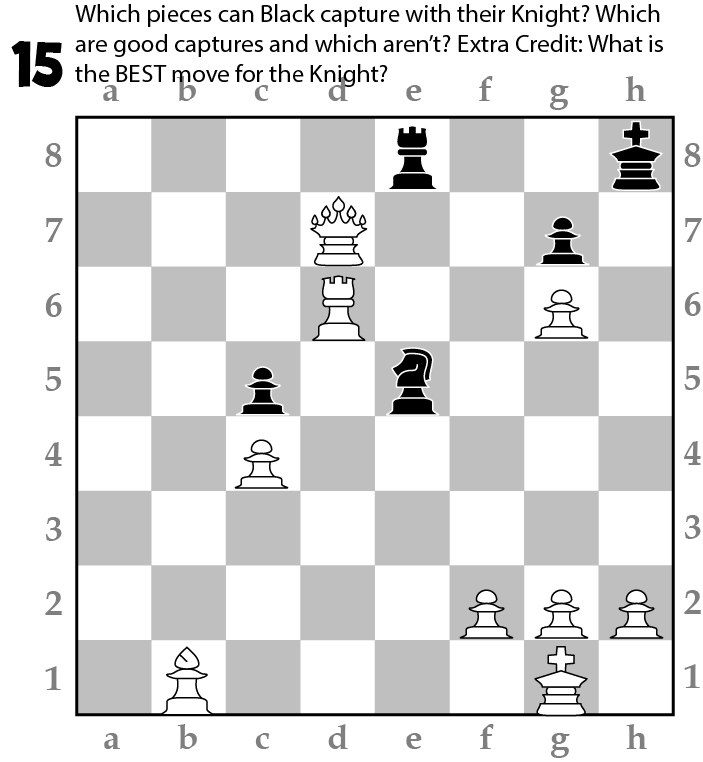
Board Setup
Here’s how it looks:

A common mistake is to switch the King and Queen. Just remember that the Queens start on their own color, and all the pieces should be facing directly across each column from each other. Otherwise you’ve made a mistake somewhere. Try this fun exercise out <LINK TO: TAKE ME CHESS> - it’s great practice for younger students just learning chess.
Winning The Game (Checkmate)
Up until now, just for fun, you can practice getting used to the pieces by capturing the King to win the game. In class we call this “Baby Chess” and playing it is not something you’re proud of. In REAL chess, you win by making a move that puts the King in danger (we call it “check”) that is so dangerous that there is no way for him to escape the danger.
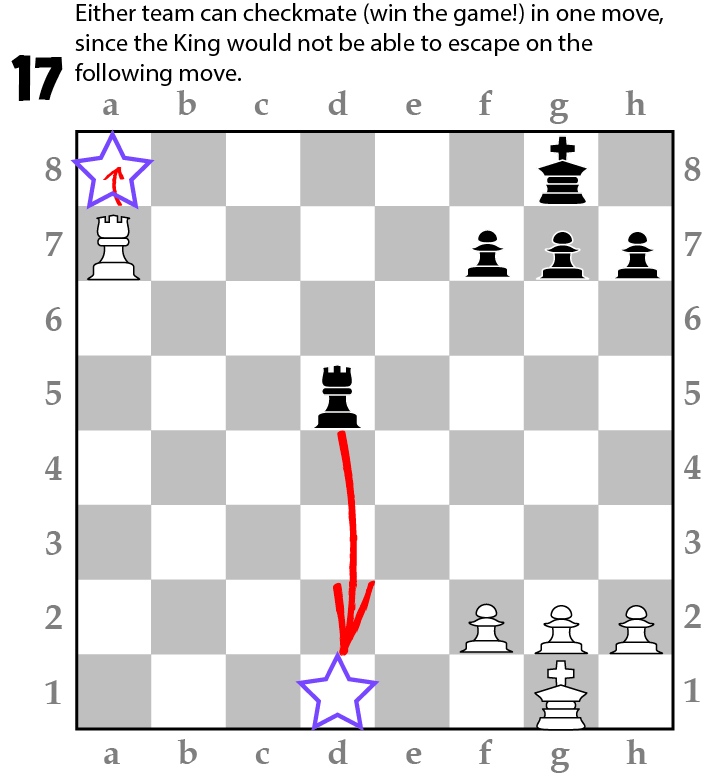
We already mentioned that the King is the most important piece – if he’s captured, you would lose the game. But then there was that confusing rule about NOT being able to capture him. That’s because chess is a civilized game. You’re playing zombie tag with your friends, and get chased up to the top of a slide. At the bottom of the slide is another zombie. You’re stuck. In civilized society, you’re not going to do something crazy like jump off the slide, or flip out and be a danger to everyone around you just because you’re about to get tagged. This is a game we’re talking about. In chess, you take a deep breath, realize you’re getting tagged, congratulate your opponent, and start a brand new game!
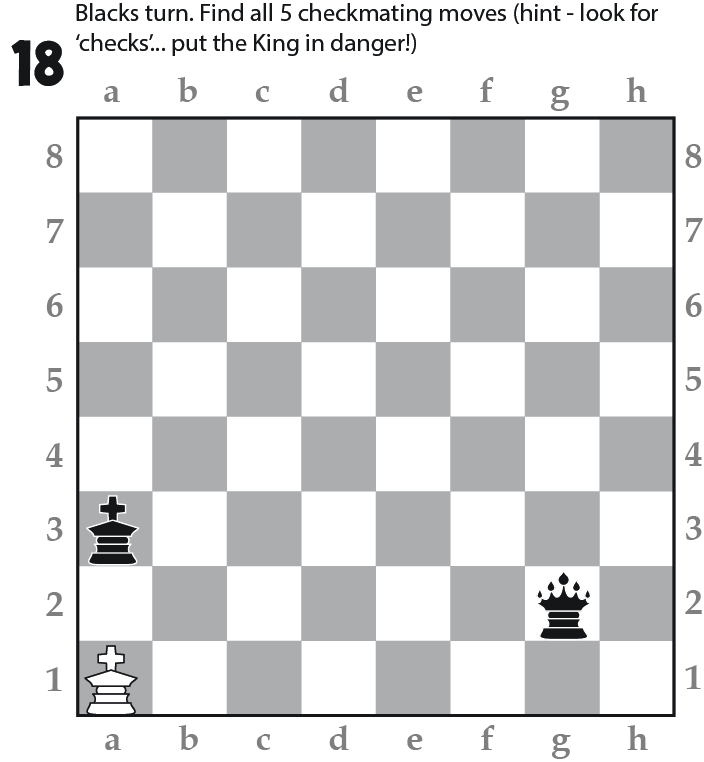
Alternative Endings
We’re not talking about that deleted scene that totally changes your favorite movie. In chess, the game can also end in a tie. But there are a few different ways for this to happen <link>, and you’re already a champ for making it this far in a long blog post. All the articles say, “People’s attention spans are only 9 seconds, the same as a goldfish! A blog has to be short, short, short!” I think they were just talking about themselves. You, on the other hand, are not a goldfish, but it’s still good to have a break. Time to blow the dust off that chess set in your closet and get some practice – or better yet, let your 6 year old show you how it’s done!
(I almost forgot, here’s that link to En Passant. It’s not a rule I would have come up with, myself, but it must have made sense to somebody…)
